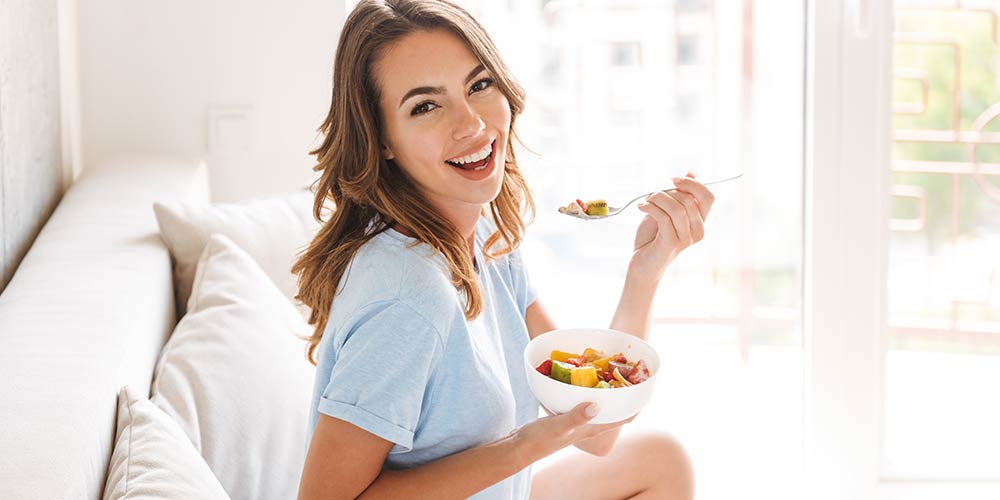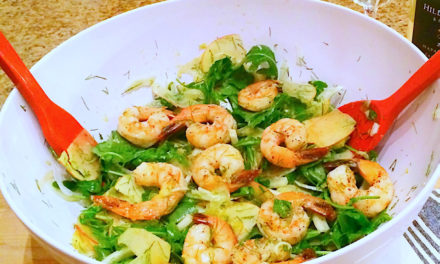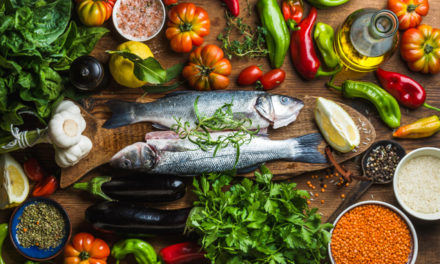By Audrey S. Geyer
Adapting your nutrition around the cycle should be used as an expansive approach, rather than a restrictive one. These nutrients and foods can be eaten anytime, but they may help you feel even better during certain phases! Consider choosing two or three foods you’d like to eat regularly during each phase of your cycle.
HERE’S HOW IT WORKS…
The menstrual cycle has two halves: the follicular and luteal phases. The follicular phase lasts from day one of your cycle, which is the first day of menstruation through ovulation. The luteal phase lasts from the day after ovulation until the day before your period begins again.
The follicular phase is a time of many hormonal changes. Most women agree that they feel very different after their period and closer to ovulation than they do while on their period. For this reason, we will consider menstruation to be its own phase! We’ll call it the menstrual phase.
The menstrual phase begins on the first day of your period and should last 3-7 days.
During menstruation, many people report symptoms, including cramps, fatigue, lower back pain, breast tenderness, and low mood. Although these are statistically common, they’re not biologically healthy or normal. PMS (premenstrual syndrome) and period pain are not your price to pay for having a cycle!
HERE ARE IMPORTANT NUTRIENTS TO INCLUDE IN YOUR DIET DURING THE MENSTRUAL PHASE:
IRON: Eating plenty of iron-rich foods can help maintain energy levels and support mental performance. The most bioavailable sources of iron are animal sources like beef, lamb, mussels, oysters, and sardines.
Other great meat-free sources of iron include spinach and broccoli, which also contain Vitamin C, and will help the iron from the plants be better absorbed by your body.
VITAMIN D & CALCIUM: These two nutrients go hand in hand and have been shown to relieve period pain. Vitamin D aids in the absorption of calcium from the gut.
Calcium-rich foods include yogurt, cottage cheese, whey protein, salmon, white beans, almonds, chia seeds, and spinach.
The best way to increase Vitamin D is through sunlight, and thankfully warm weather is coming! Vitamin D can also be consumed through foods like salmon, tuna, egg yolks, and beef liver.
ZINC: Zinc is anti-inflammatory and can support your immune system while also reducing menstrual cramps and even hormonal acne. Zinc-rich foods include oysters, lentils, beef, chicken, tofu, and pumpkin seeds.
After the menstrual phase, you enter the follicular phase. During this phase, the ovaries begin to secrete estrogen. Estrogen rises daily and is used by nearly every system of health in the body.
As estrogen reaches peak levels, the pituitary gland releases a surge of luteinizing hormone (LH) to cause the dominant follicle to mature and rupture. This all leads to the main event of the menstrual cycle: ovulation.
HERE ARE IMPORTANT NUTRIENTS TO INCLUDE IN YOUR DIET DURING THE FOLLICULAR PHASE AND FOR OVULATION:
OMEGA-3 FATTY ACIDS: Increasing the Omega-3s you eat may begin to proactively reduce period cramps in your next cycle and keep mood disturbances, hormonal acne, and body aches at bay. Omega-3-rich foods include fish and seafood, hemp seeds, chia seeds, flaxseed, & walnuts.
INDOLE-3-CARBINOL: Indole-3-Carbinol is found in cruciferous vegetables and helps your body clear out excess estrogen, which happens through the liver.
Eat lots of cruciferous vegetables, including kale, arugula, cabbage, broccoli, cauliflower, Brussels sprouts, and bok choy.
FOLATE (B9): Folate is an important vitamin for ovulation, proper cell function, brain health, and creating and repairing DNA. Folate is found in leafy greens, asparagus, citrus, bananas, avocados, and legumes.
After ovulation, you enter the luteal phase of your cycle. Estrogen decreases, and the follicle that ruptured during ovulation is recycled by your body and turned into the corpus luteum. The corpus luteum secretes progesterone, the dominant hormone over this 10-18 phase of the cycle.
During the luteal phase, many women struggle with symptoms like low mood, irritability, cravings, trouble concentrating at work or school, bloating, digestive changes, and acne. We call these symptoms PMS or premenstrual syndrome, which often occurs by trying to treat our bodies the same way we would during every other phase. PMS is a sign that something, either internal or environmental, may need to be adjusted to fit this part of your cycle better.
HERE ARE IMPORTANT NUTRIENTS TO INCLUDE IN YOUR DIET DURING THE LUTEAL PHASE TO HELP REDUCE THESE SYMPTOMS:
MAGNESIUM: Magnesium supports a wide variety of functions in the body, but some of the most noteworthy are reducing anxiety, supporting stress recovery, muscle recovery, and getting a restful night’s sleep. Magnesium is found in dark chocolate, so go ahead and indulge your cravings! Magnesium is also found in nuts, sweet potatoes, and bananas.
VITAMIN C: Vitamin C is important for the production of progesterone, as well as for immunity, skin, and stress support.
Vitamin C-rich foods include spinach, broccoli, bell pepper, strawberries, citrus, and kiwis.
L-TRYPTOPHAN: L-Tryptophan is an amino acid that your brain uses as a precursor to making serotonin. Serotonin tends to be lower during the luteal phase of the menstrual cycle, contributing to low mood and difficulty focusing.
L-tryptophan is an essential amino acid, meaning that your body cannot make it on its own, and it has to be consumed through food. It’s found in complete proteins, such as beef, poultry, dairy, and eggs, which also help with energy production and support a healthy metabolism.
Increasing protein intake during the luteal phase can be extremely beneficial, but the best way to boost your mood may be to eat l-tryptophan from carbs like sweet potato, chickpeas, and oats!
Audrey S. Geyer is a High-Performance Women’s Health Coach and Fertility Awareness Educator who helps women make sense of their health in a holistic, functional way.
Audrey is currently accepting new private clients for Fertility Awareness Method and Women’s Health Coaching. Contact her via email at audreysgeyer@gmail.com or find her on Instagram @audreysgeyer







